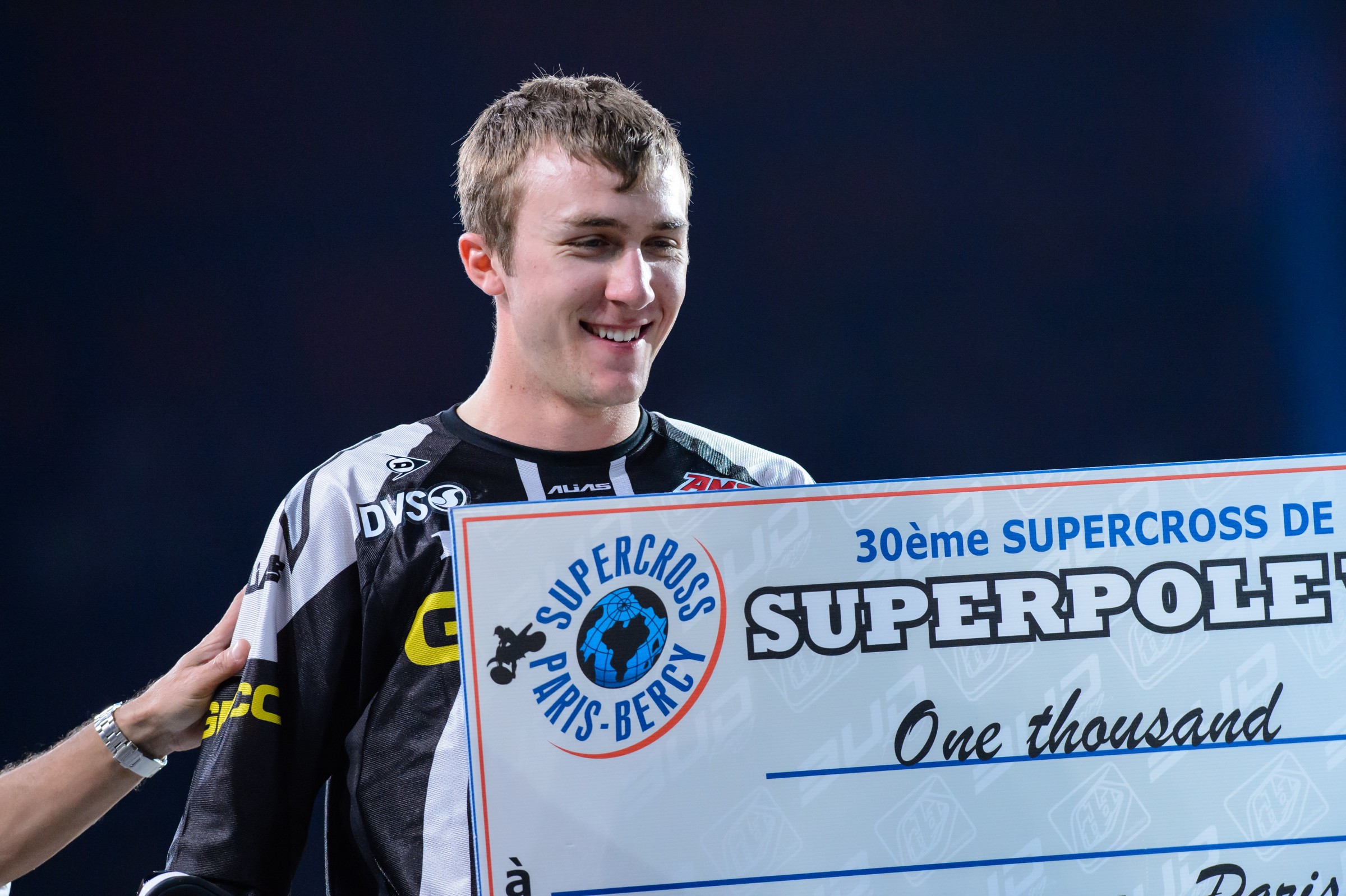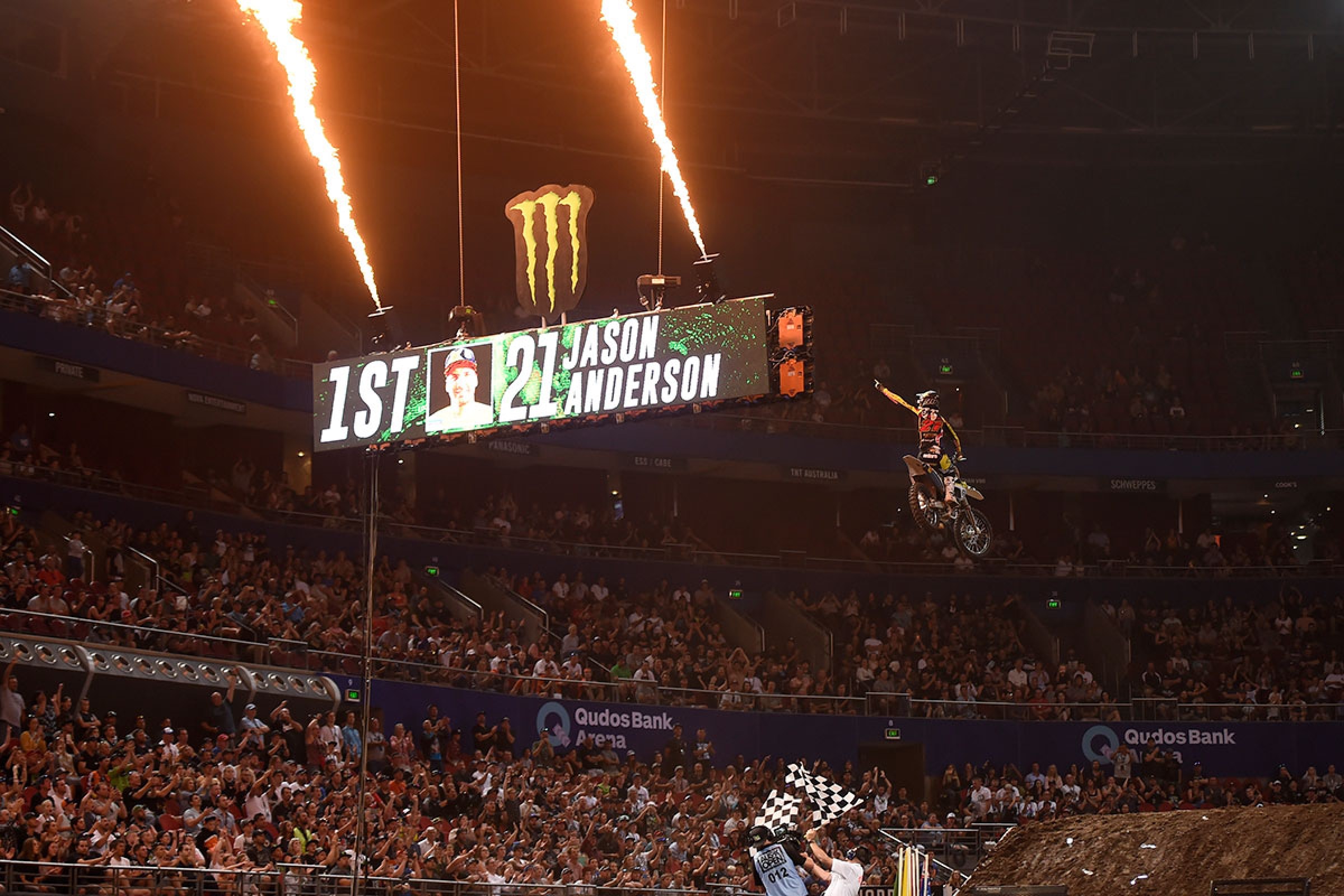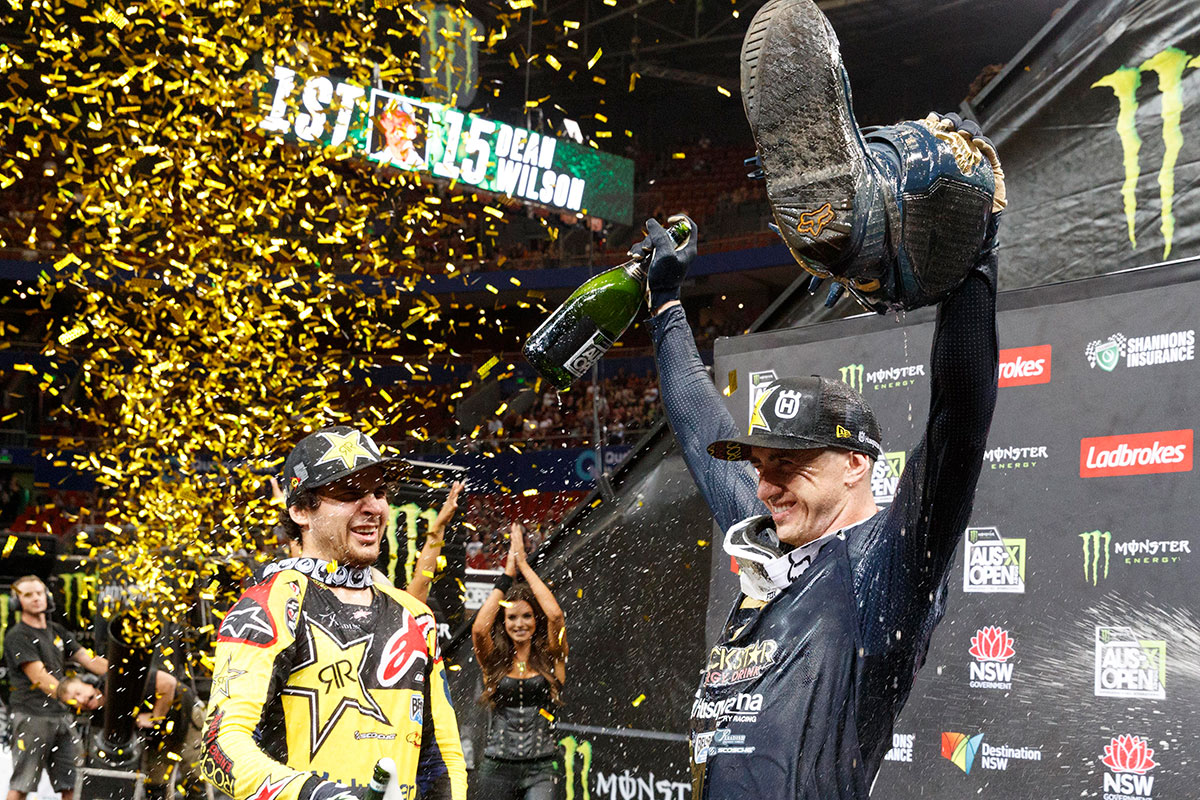“I’m working with Ryan Villopoto these days,” says Lucas Mirtl, an agent with Wasserman Media Group. “He’s told me he probably left a million dollars on the table by skipping all of the offers he had for off-season races. Now he looks back and he’s like, ‘A million dollars! I could have done it. It was the off-season. I could have done them.’ No one wants to leave that kind of money on the table.”
Villopoto’s situation is unique—he’s the proverbial 1 percent both as a racer and earner. As a championship-level rider, he faced intense pressure, grinding through the long domestic racing schedule while enduring Aldon Baker’s rigorous training program. At RV’s level, there can be no bad days—even a second-place finish looked like a crisis. That scrutiny can sap anyone’s enthusiasm, and eventually Ryan looked unhappy even while winning the most prestigious races in the sport. He could hardly smile, even while grabbing another #1 plate. It seems impossible that he would have enjoyed adding even more races to his schedule.
Yeah, but still. When I talk to retired racers, I find they only fall into two categories: those who raced off-season events and those who wish they had. I’ve yet to find a rider who skipped the off-season paydays and doesn’t regret it—we’ll check in with Ryan Dungey in 2027 to be sure, but even Dunge, who has long championed championships over material goods, will probably have a tough time waving away an extra seven figures in the bank.
“I don’t care how much money you saved or how much money you made,” Mirtl says, “once those big checks stop coming in, you’ll always wish you had more.”
Truth. Heck, Jeff Stanton, an indefatigable ironman workhorse of the highest order, retired at the ripe old age of 26. He cited burnout from racing virtually year-round. Jeff routinely says he has no regrets, though: “You have to make hay while the sun shines.” While Jeff was enjoying the salary and bonuses that come with six AMA National Championships, he claims in some years he’d make just as much money gallivanting around the world in the winter as he did winning the 250 Supercross Championship here at home. Back then, there were tons of off-season money races throughout Europe and Japan. Stanton basically doubled his salary for a few years, and since the riders in the early 1990s didn’t make anything close to what today’s riders do, that money really helped.
It changed, subtly but effectively, in late 1999, when Ricky Carmichael raced the Bercy SX and broke his collarbone. It was a minor injury, really, but at Anaheim 1 in 2000, RC led early, only to fade. Knowing RC’s legendary competitiveness, one can assume he was fuming after that, blaming his off-season tumble and lost training time. A year later, Carmichael had a new trainer, named Aldon Baker; he skipped the off-season internationals and turned into a lean, mean ass-kicking supercross machine. You know what comes next: everyone follows the leader. It became trendy to skip the international races, because that’s what Ricky did. Skipping off-season races proved you were putting in the work and focused on the real prize. For a while, the Bercy SX became a 250F-only event, because it had become impossible to hook the biggest names in the sport.
Plus, the riders of the 2000s could justify it because they were making big, big money at home—way more than Stanton did. If you’re raking in $6 million, what’s an extra $200,000?
Well, even Villopoto has figured out that five extra $200,000 paydays actually sounds really, really nice.
“I push it to my guys now,” Mirtl says. “You add up all these races over a ten- or twelve-year career, depending on the rider, and you’re looking at a million dollars or half a million dollars or $300,000. That’s good money. You’re motorcycle racers; you get to travel the world for free. The AMA stuff is stressful. Here, you get what you get and there’s no pressure. You finish fifth, you still have fun and get paid. You win, hey, that’s a nice bonus.”
Mirtl finds himself pushing that low-pressure aspect the most. Riders like Villopoto and Dungey have little experience racing events that they really don’t have to win. The Motocross of Nations is the pressure cooker to cook all pressure cookers. Losing a Grand Prix on American soil could spark an international incident. The Monster Energy Cup offers up $1 million if you can sweep all three races. Bercy? Most of the riders get paid via show-up money, so the race results and purse mean very little. The fans cheer regardless. Plus, there’s virtually zero historical connection between winning in Paris and winning at Anaheim. These races are for fun and for the fans.
Two of Mirtl’s clients, Jeremy Martin and RJ Hampshire, will race the Paris-Bercy SX this weekend. Hampshire also raced the AUS-X Open in Australia over the last weekend. There are openings for plenty of riders at these events—Paris-Bercy will host six American-based riders in the 450 class. For Mirtl, it’s key to first convince his riders to want to do them, and then convince the promoter to pick his riders.
Mirtl says he plants the seeds early, trying to get his guys in all year. Martin got the nod when Christian Craig went out with a hand injury. He also says it helped “a lot” that Hampshire grabbed the MX2 win at the MXGP of USA in Jacksonville, Florida, a few months ago. A win like that can instantly make a rider a bigger name internationally, and with it, Hampshire becomes a bigger draw for the promoters. Remember: Australian fans now know exactly who RJ Hampshire is, because he was the dude battling Hunter Lawrence for the win at that GP.
Once the riders and promoter are on board, there are still many hoops to jump through. Bikes and parts have to be built and shipped. The process has grown more complicated because riders can’t check works suspension as airline luggage anymore. Because of TSA regulations, there’s too big a risk that they could be seized and held, not making it to the race. Stuff that used to fly for free has to be shipped, which costs more money and means the parts have to be completed earlier. In the case of Hampshire, one set of suspension had to be shipped to Sydney, while another was sent to Paris. In the old days, he could have just flown to each race with his suspension as luggage.
The GEICO Honda team says they will usually take a part of the rider’s weekend pay to cover the out-of-pocket expenses of building and shipping bikes and parts. This varies from team to team, though, and no team gets money back for the labor involved. Consider this the cost of keeping your rider happy.
“It’s a lot of work, and some of it can get to be a pain,” says Mirtl, who won’t divulge exactly how much his riders will make for their international forays. “But I can put it this way—it’s a lot of work, but it’s enough money to make it worth doing.”










